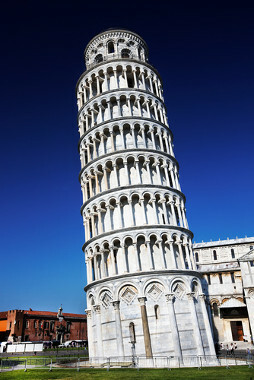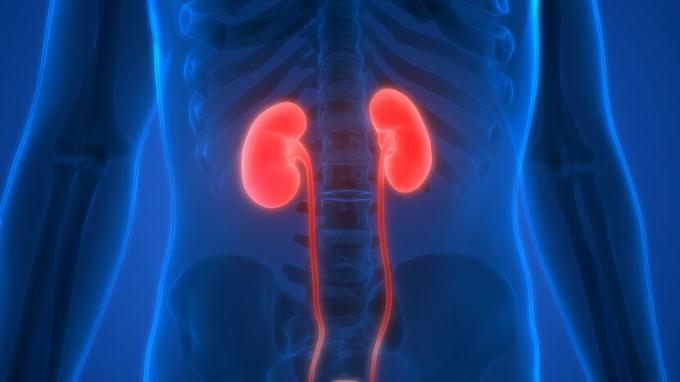Galileo Galilei was born in Pisa, Italy, in the year 1564.He became a great physicist, astronomer and mathematician who eventually contributed to a major revolution in science that took place in the first decades of the 17th century. He is even considered by many to be one of the founders of physics.
Galileo claimed that the "Mathematics was the language of nature" and by this he meant that all hypotheses raised by scientists should be verified by carrying out experiments and calculations. Thus, scientists should not only say what they thought about the subject, but prove it through scientific methods. And Galilei actually performed many important experiments and observations that changed the way we see objects around us and even the Universe.
One of Galileo Galilei's discoveries, for example, was that all bodies, regardless of their weight, fall together when abandoned at a certain height. But maybe you ask yourself: “How can this be true? If I drop a sheet of paper and an eraser at the same time and at the same height, the eraser will hit the ground first! This proves that the “heavier” objects hit the ground first.”
is this really true?Well, a philosopher who lived many years before Galileo, named Aristotle, thought so too, that heavy objects fell first, but Galileo proved otherwise.Think of the example given: If you take the sheet of paper and crumple it into a ball, will it fall at the same speed as before? You will see that it doesn't, because now it will fall faster.
Why does it happen?Because what influences the speed at which the object falls is not its mass. The mass of the paper remained the same, but beforehand the air hit the underside of the sheet, preventing it from falling more quickly. So much so that you can also see that the sheet of paper does not fall straight down, but slides through the air, making a zigzag-like motion.
On the other hand, when the sheet of paper is crumpled into a ball, it can cut through the air and reach the ground faster. Galileo correctly deduced that if there was no air to “disturb” any object, a feather and a lead ball, for example, would reach the ground together.

Experiment with falling sheet of paper
Some sources claim that Galileo carried out an experiment to prove this finding. In 1590, he would have climbed to the top of the Tower of Pisa (shown below) and released from above, simultaneously, a lead ball and a wooden ball. The result, as expected, was that the two balls reached the ground almost at the same time.
Whether this experiment was actually carried out by Galileo is not proven. But the fact is, he was right. Astronauts who went to the moon did a similar experiment, and there, where there is neither air nor gravity, Galileo Galilei's theory of free fall of bodies.

Tower of Pisa, Italy. Place where Galileo would have made his famous experiment on the free fall of bodies
At the age of 28, Galileo Galilei was appointed Professor of Mathematics at the University of Padua, considered the best university in all of Europe around the 16th century. He remained in that position for 15 years.
Another of Galileo's discoveries was the first thermometer (shown in the figure below). This thermometer consisted of a completely closed glass tube that contained water. Inside it were floating small colored bubbles that contained dyed water. Each bubble had a metallic label that indicated the temperature of the colored water inside. The higher the temperature, the more the bubble would fluctuate and vice versa.

Galileo's thermometer showed that density depends on temperature
Galileo Galilei also created a pulse measuring instrument, one horse operated water pump, not to mention his contributions to the field of Physics known as Mechanics. An example of this was his hypothesis about the uniform rectilinear movement. He said that the distance traveled by a piece of furniture in this movement was directly proportional to the square of the time spent on it.
But the heyday of Galileo Galilei's life came with the discovery oftelescope in 1608. In fact, it was invented by the Dutch lens maker Hans Lippershey, but he didn't know how to explore what the telescope could accomplish. This instrument was even called perspicillium, which meant “instrument to look through” and came to be used as a military artifact.
In 1609, the perspicillium it came into the hands of Galilei Galilei in Padua, who perfected it, making it ten times more powerful than the original. Galileo started calling it a telescope, a name that comes from the Greek words “in the distance” and “to see”.
Galileo decided to use the telescope to study the “heaven” (universe) and realized that many aspects were not as other philosophers and thinkers had said. Among the facts he observed, the most important was that the Earth was not the center of the cosmos, but the Sun. This idea became known as heliocentrism.
This finding supported the idea of another important scientist, Copernicus. Today we know that this is really true because, as shown in the figure below, the planets of Solar system revolve around the Sun.

In the Solar System, the Sun is the center, not the Earth
However, at that time, the Catholic Church defended that the Earth was the center of the universe, so it took a stand against the ideas of heliocentrism. In 1632, Galileo published a work entitled Dialogues on the two great systems of the world, defending heliocentrism. The Church condemned this work, and the Pope condemned Galileo to the tribunal of the Inquisition.
So, at the age of nearly 70, Galileo was tried and forced to declare that his ideas were false. He was sentenced to stay under house arrest outside Florence until his death, which occurred on January 8, 1642. In 1997, Pope John Paul II made a posthumous apology to Galileo.
While in prison, Galileo also produced his last work, two new sciences, in which he presented the foundations of Mechanics, returning to the study of motion and the properties of bodies.
* Image copyrighted: Georgios Kollides / Shutterstock.com
By Jennifer Fogaça
Graduated in Chemistry



